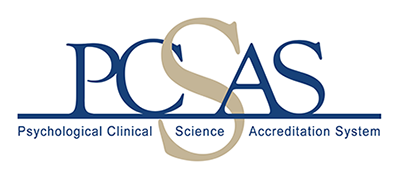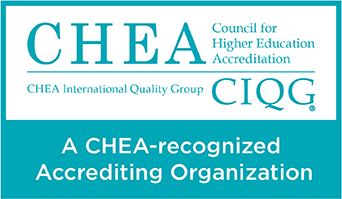

Gabriela Memba & Gretchen Perhamus
Adapting School-Based Research
Procedures to a Post-Covid World
by Gabriela Memba, MA & Gretchen Perhamus, MA
State University of New York at Buffalo
When considering the past year and a half, the list is endless regarding how COVID-19 has changed the way we go about our lives. Just as individuals were forced to adapt to this new world, so did the practices of research. Like many, our own lab’s data collection and recruitment came to a grinding halt in those first few weeks of the lockdown. As the severity of the pandemic became more clear with each passing day, we were forced to reevaluate our current approaches.
As a social development lab that works with youth in early childhood, our methods of recruitment typically involved going to preschools and interacting face-to-face with teachers, students, and administrators. Given that we were still in the midst of recruitment during the onset of the pandemic, we quickly ran into our first challenge: How were we to recruit preschoolers if we couldn’t go inside the preschools? This was made even more challenging given that preschool enrollment across the country had drastically dropped during the pandemic (Crawford et al., 2021).
In addition, we were faced with the challenge of continuing data collection when most of our procedures were designed to take place in-person. For instance, we would go into preschools to provide questionnaires for teachers and administer assessments to their students. We also utilized psychophysiological data collection methods including collecting saliva and measuring heart rate. Given the increased stress experienced by teachers and parents nationwide (Crawford et al., 2021; Russell et al., 2020), it was also important for us to minimize the burden of our procedures. Although we hoped to return with everything back to normal, it became clear that this would not be the case – and so, instead, we adapted.
Here are reflections on strategies that our lab embraced in navigating these changes:
- Broadened our reach. With enrollment down significantly nationwide (Crawford et al., 2021; Zhang et al., 2021), and schools navigating rapidly changing guidance (Hashikawa et al., 2020), expanding the number of schools we were recruiting from was crucial. For instance, we expanded our recruitment to approximately twice as many schools as we were involved in pre-pandemic in order to approach earlier levels of participation.
- Moved data collection out of the school context to reduce the burden on teachers and school administrators. For us, this meant transitioning to virtual interviews and having parents complete physiological data collection from home. To reduce the burden placed on parents, we also added new documents and training information to our website (including training videos for parents completing data collection, guides to using Zoom, etc.). In making this shift, we had to adjust our assessment protocols, develop digital stimuli, and determine new ways of working with biospecimens (i.e., saliva and nail samples) to allow for home collection while maintaining the integrity of the samples. We worked closely with our consultants to make sure decisions were evidence-based when possible, and did our best to balance needed adjustments with maintaining continuity with data collected in the schools pre-pandemic.
- Increased staff availability and flexibility to support parents in their increased roles in data collection. To increase availability for parents, staff were in touch with families via text, phone, and email. We also expanded our availability to evenings and weekends to better accommodate parents’ schedules.
- Asked teachers and parents what will work best for them. Although as researchers we are the experts on our projects and their methodology, parents and teachers are the experts on their own and their children’s needs. When deciding whether or not adjustments to data collection procedures are needed, and what might be most helpful, go to the source. For instance, during pilot rounds of home saliva collection, our parents let us know that a demonstration of the procedures would be helpful, so we developed instructional videos posted on our website for all families to view. In contrast, although we initially feared that schools would not be comfortable with us coming into the buildings to pass on consent forms and that we would have to dramatically change our recruiting methods, the majority of schools were able to work with us to develop Covid-safe ways to distribute consent forms as usual.
- Don’t forget your staff. Undergraduate RAs, graduate students, and PI’s were coping with the same uncertain and tiring circumstances as participants. While prioritizing the needs of volunteer research participants may maximize the quantity of data collected, the quality of the data will suffer if project staff are burnt out. Maintaining limits and taking time to reflect on and validate the difficulty of forging ahead with research during unprecedented times was crucial.
We hope by sharing these lessons learned, future projects can also take advantage of these strategies in this changing age of research.
__________________________________________________
References
Crawford, A., Vaughn, K. A., Guttentag, C. L., Varghese, C., Oh, Y. & Zucerk, T. A. (2021). “Doing what I can, but I got no magic wand:” A snapshot of early childhood educator experiences and efforts to ensure quality during the COVID-19 pandemic. Early Childhood Education Journal, 49, 829-840. https://doi.org/10.1007/s10643-021-1215-z
Hashikawa, A. N., Sells, J. M., DeJonge, P. M., Aldon, A., Martin, E. T. & Shope, T.R. (2020). Child care in the time of Coronavirus Disease-19: A period of challenge and opportunity. Journal of Pediatrics, 225, 239-244. https://doi.org/10.1016/j.jpeds.2020.07.042
Russell, B. S., Hutchison, M., Tambling, R., Tomkunsa, A. J., & Horton, A. L. (2020). Initial
challenges of caregiving during COVID-19: Caregiver burden, mental health, and the parent-child relationship. Child Psychiatry & Human Development, 51, 671-682. https://doi.org/10.1007/s10578-020-01037-x
Zhang, Q., Sauval, M., & Jenkins, J. M. (2021). Impacts of COVID-19 on the child care sector: Evidence from North Carolina. (EdWorkingPaper: 21-371). Retrieved from Annenberg Institute at Brown University: https://doi.org/10.26300/q1jv-6217

